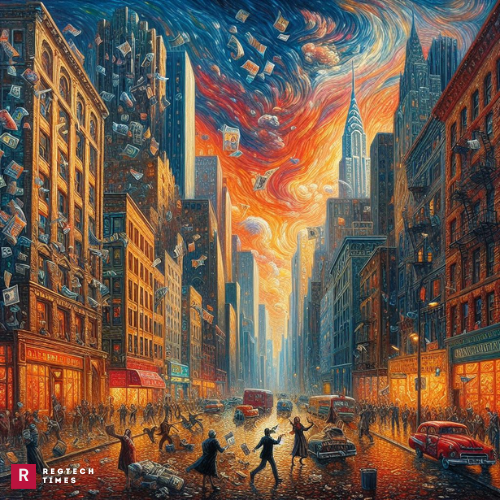With its attraction to innovation and beauty, the art industry frequently hides a darker reality, one in which works of art are used as pieces in a complex game of money laundering and criminal activities. In this Auerbach case, we explore the fascinating story of a work of art by renowned British artist Frank Auerbach, illuminating the covert relationship between art and money laundering.
“Albert Street, 2009”: A Window into Auerbach’s World
The central work of this story is “Albert Street, 2009,” a mesmerizing composition from Auerbach’s renowned series that portrays the streets of north London’s Camden Town. The essence of Auerbach’s unique artistic style and emotional depth are captured in this piece of art, which also pays visual tribute to his lifelong attachment to the region.
Lenn Mayhew-Lewis’s Role and the Journey to Auction
Enter Lenn Mayhew-Lewis, a central figure in this tale of deception and intrigue. Mayhew-Lewis, who was found guilty of money laundering, offers insight on the extent people will go to to launder money through the art market by virtue of his role in the purchase and subsequent misuse of “Albert Street, 2009”. The convoluted story of “Albert Street, 2009″‘s transition from a private purchase to a possible public auction is full of moral quandaries and intricate legal difficulties. The NCA’s action in reclaiming the artwork and getting it ready for sale highlights the agency’s dedication to battling financial crimes involving art and bringing integrity back to the market.
Auerbach’s Artistic Legacy
The incredible artistic journey of Frank Auerbach gives this story much more dimension. Auerbach was born in Berlin during the chaos of World War II, and his artistic development shows not just his technical mastery but also his fortitude in the face of difficulty. His distinctive style, which is distinguished by vivid hues and heavily applied paint, says volumes about his unshakable dedication to expressing the truth.
Safeguarding the Integrity of the Art Market
It is poignantly reminded of the value of diligence and watchfulness in the art market by the discovery of “Albert Street, 2009”. Auction houses and art dealers need to be on the lookout for dishonest individuals who want to take advantage of the sector for personal benefit, especially as the NCA keeps up its crackdown on money laundering operations. To protect the integrity of the art market for future generations, it is critical to put strong standards in place for spotting and reporting questionable conduct.
Beyond simply being a masterwork by a renowned artist, “Albert Street, 2009” represents more as it gets ready to start a new chapter in its life through the NCA’s selling procedure. Moving forward, it is a sign of optimism for a more open and moral art industry, symbolizing the victory of justice over criminals. The light of truth is most radiant in the shadow of crime, throwing light on the road to honesty and atonement in the arts.



